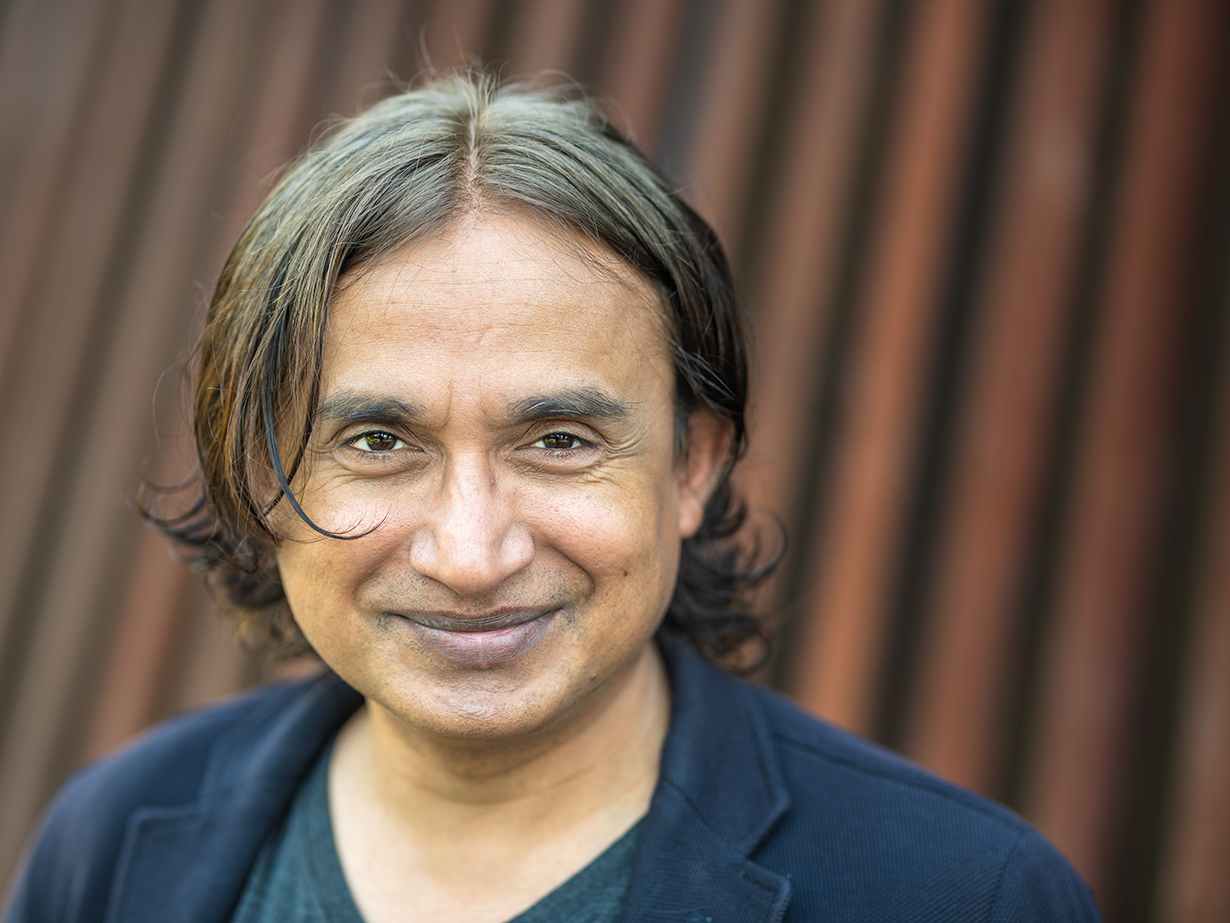It wasn’t enough for Prasenjit Tito Chowdhury to enroll in a prestigious U.S. engineering program, then land a job at Intel, one of Oregon’s most well-known employers.
No, after coming to America, the native of Bangladesh wanted more than simply working each day to pay his bills.
“I wanted to be a citizen of the community,” he says.
And he did that in a big way, by veering from engineering to a career in a totally different sector: fashion.
In 2012 he launched FashioNXT, an internationally recognized fashion showcase. The forum not only aims to be on the leading edge of fashion. It educates fashion goers about social issues ranging from immigration to the Black Lives Matter movement.
Chowdhury’s transition from technology to fashion may seem surprising. But it makes sense to the engineer, now 50, who once performed in a boy band that traveled up and down the West Coast.
Chowdhury was born in what is now Chottogram, Bangledesh, where his grandfather was a prominent leader in anti-British politics who spent much time in jail.
During the Bangladesh Liberation War-a bloody conflict between Bangladesh (East Pakistan) and West Pakistan (now Pakistan) that resulted in Bangladesh’s independence from Pakistan–his family was swept up in violence.
During the 1971 war, soldiers raided his hometown. As Hindus, his family members were among the minority and viewed as enemies of the state. When soldiers stormed his town, Chowdhury’s mother hid in rice paddies, cradling him in her arms until the soldiers left.
During the conflict, they avoided the soldiers by traveling back and forth between their two homes, the second of which was a country home in Chittagong district.

After the violence ended, and a few years had passed, Chowdhury’s mother prepared him for school. At age four, he passed the required test to enter first grade, but his mother had to wrangle with school officials who claimed he was too young. His mother triumphed and academics were easy.
During this time, his family began to lose political power, and along with it, control of its land. His mother focused on education.
“When your political clout and wealth is on a downward slide, education is the main way to go back up,” he says.
He decided to pursue engineering and scored high on the exam required to enroll in the Bangladesh University of Engineering and Technology.
After graduating, Chowdhury moved to the U.S. to attend the University of Texas at Austin in 1994. He was recruited by Intel, where he helped design microprocessors on the cutting edge of manufacturing.
But engineering didn’t speak to his artistic side.
“Being poetic, aware of emotions and thinking big are all creåtive inclinations that separated me from a lot of the other typical tech-minded nerds,” he says.
In 1999, Chowdhury began to explore Portland’s arts scene.
He began by volunteering to help Portland State University’s Multicultural Resource Center’s World Dance Office keep its event calendar updated.
In 2004, the Portland Art Museum recruited the engineer to its Executive Committee of Young Patrons, which aimed to encourage young professionals to become involved in the museum.
He also began attending fashion events, drawn to the industry because it’s more democratic than the other arts. Everyone must wear clothing, in spite of income, he says. In addition, he liked that fashion is always changing, with new options offered through the seasons.
In 2006, Chowdhury was invited to co-own and produce Fashion Week in Portland, an effort that attracted Portland Mayor’s Spirit of Portland Award 2008. He also partnered with SolarWorld in 2010 –– mixing his engineering and art skills — and created the first solar-powered runway.
In 2012, he founded FashioNXT in Portland, which was ranked by Time Magazine as the number one runway show outside of New York Fashion Week.
Chowdhury wants his fashion to be a force for social change. Last year, he created a show that highlighted Latinx designers.

“I saw fashion as a way to highlight something way bigger than fashion, which is talent and success,” he says.
He has also offered his platform to elevate Black voices through YouTube interviews with Black models and television personalities.
“Tito has excelled in putting on a stellar fashion show for Portland and has opened doors for designers of color, especially Latina designers,” says Xiomara Torres, a Multnomah County Circuit Court Judge.
But his experience in America wasn’t always easy. Along the way, Chowdhury experienced racial bias, especially after President Trump took office.
“Others feel like they would be better than me at doing what I’m doing because of my skin color,” he says.
Despite this bias, Chowdhury achieved what his family always expected: success. Along the way, he has realized his goals of contributing to the greater good and opening people’s eyes to the talents of immigrants and people of color.
“That’s the power of fashion,” he says. “It breaks down all the walls between people. They can see without politics or bias that these designers are as good as and sometimes better than others in their talent.”

